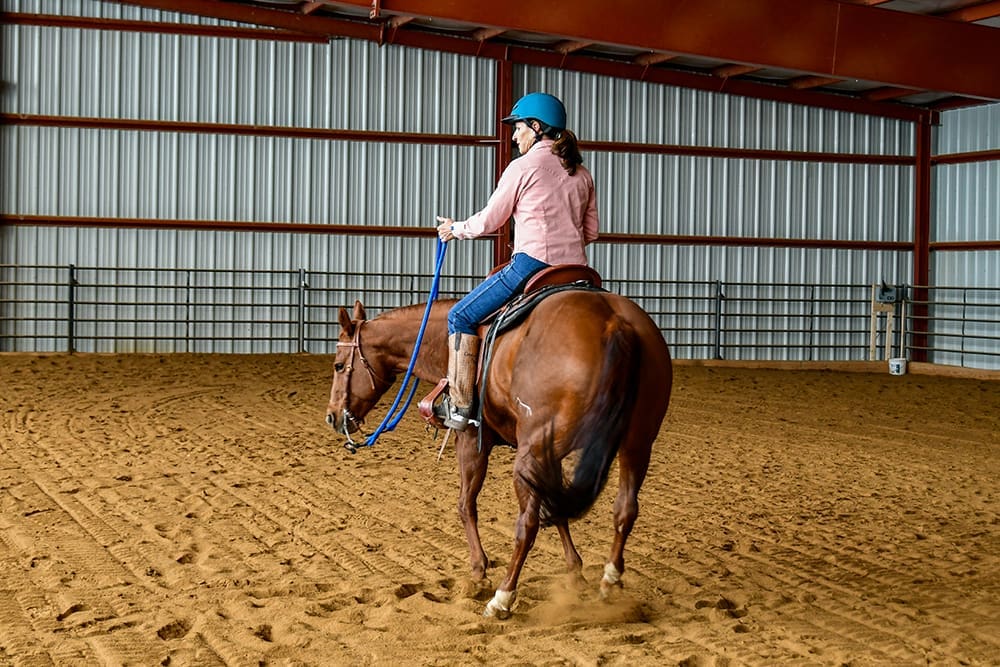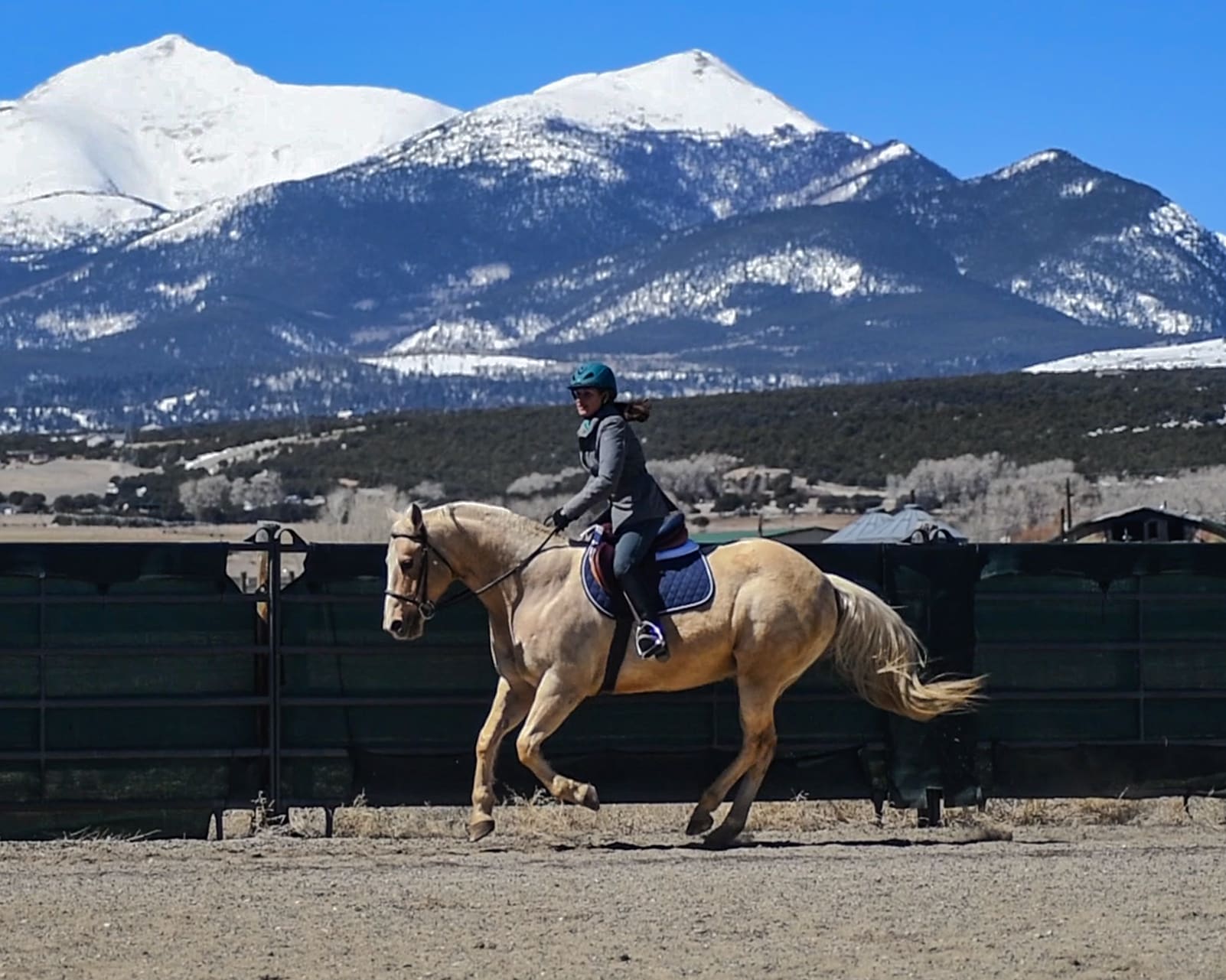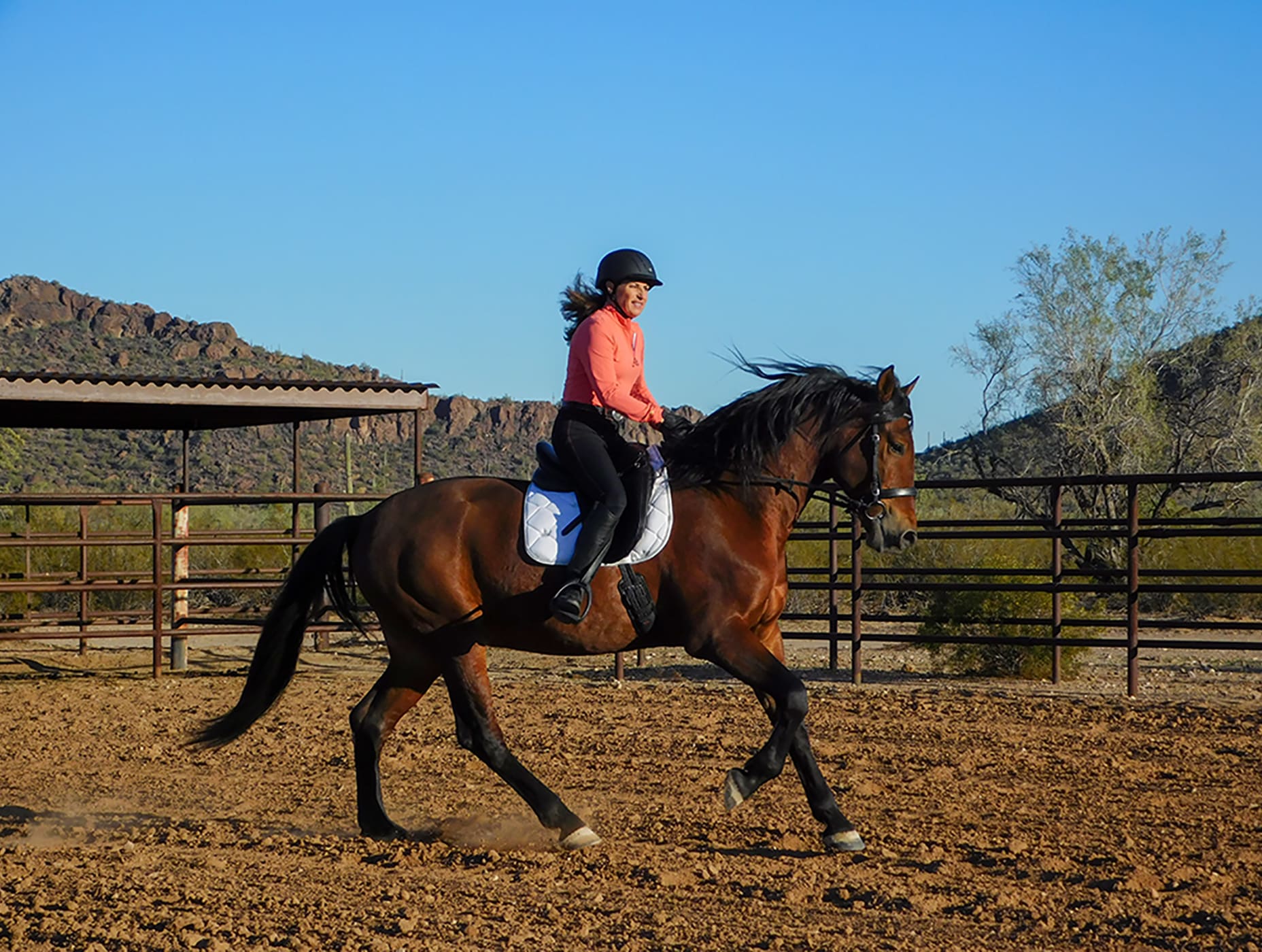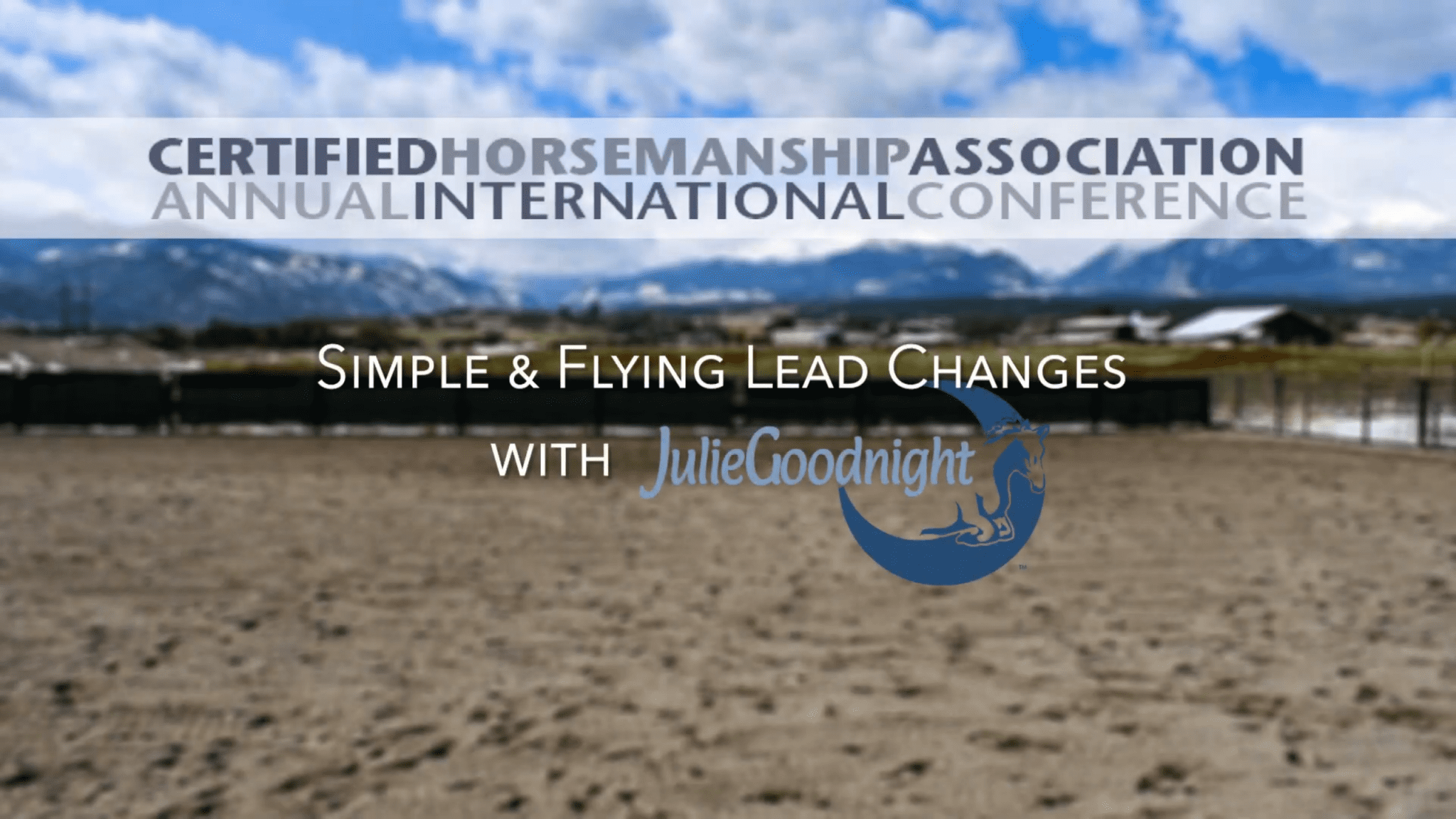Question Category: Riding Skills
Question: Hi Julie,
I have trouble feeling my canter leads, and I know the worst thing I can do is look down. What is the best way to feel the lead?
Also, I’m confused about the direction of the circle you make with your hips when cantering. I heard I’m supposed to go counter-clockwise on both the left and right-rein, and clockwise on the counter-canters. Is this true? Does it even matter?
Thanks,
Alissa
Answer: Alissa,
Feeling canters leads is not hard, either is feeling posting diagonals. But to do either, you have to know what you are feeling and have the self-discipline not to look; think about how it feels for a few strides, make your decision then look if you need to verify your results.
When the horse canters on the right lead, both his right hind and right fore are leading over the left legs (visa versa with the left lead) and he picks them up higher and reaches farther forward with those legs. Therefore his back will be slightly crooked underneath your seat, both front-to-back and side-to-side.
In your hips you’ll feel your inside hip in front of your outside, so if he is on the right lead, your right hip and leg will be in front of your left hip and leg. Because he is picking both leading legs up higher, you’ll also feel your weight shift to the outside, so if he is on the right lead, you’ll feel more weight in your left seat bone and left stirrup.
This unevenness that you feel in his back is important in setting your horse up for the correct lead, cueing for the canter and cueing for flying lead changes. As you go about cueing your horse for canter, you basically set your body into the canter position for the lead—your outside leg down and back (which tends to bring your inside hip and leg forward), your inside rein lifted (which shifts your weight into the outside stirrup), then a push with your seat in the canter motion (like you are pushing a swing) tells the horse to canter.
To execute a right-to-left flying lead change, you’ll first exaggerate the position your body is in on the right lead (right leg forward, weight in left stirrup, slight lift of right rein), then about a stride or two before you want to change leads, you bring your entire position back to center, then shift into the left lead body position (left leg forward, right leg back and down, left rein lifted).
There is great detail on all of this in volume 4 in my riding DVD series, Canter with Confidence, including cueing, feeling leads, dealing with lead problems, controlling the canter and lead changes.
As for your second question—I think you are over thinking this. You’ve got even me confused with the clockwise and counter clockwise stuff! Your hips do make a circle at the canter, but you do not need to worry about which way and you won’t need to be doing the hula dance. Your hips circle front-to-back at the canter, much like when you are pushing a swing. They move in the same direction no matter which lead you are on or which direction you are going—the only difference is that on the right lead you’ll feel your right hip leading and visa versa on the left. Sometimes too much thinking gets in the way of feel!
PS- if you’re interested in learning to feel posting diagonals, check out my Training Library for related articles and one of our most popular episodes of Horse Master was on this subject. It was episode #204, Feel the Beat: http://signin.juliegoodnight.com/videos/horse-master-shows/episode-204-feel-the-beat. You’ll need a Library or Interactive Membership to watch full episodes. Not a member yet? Go to http://horsetraininghelp.com to join. If you want to watch a clip, click here http://www.youtube.com/watch?v=soS3HRr94P8
Enjoy the ride!
Julie
Copyright ©Julie Goodnight 2000. All Rights Reserved. No part of this website may be reproduced without owner’s express consent.



